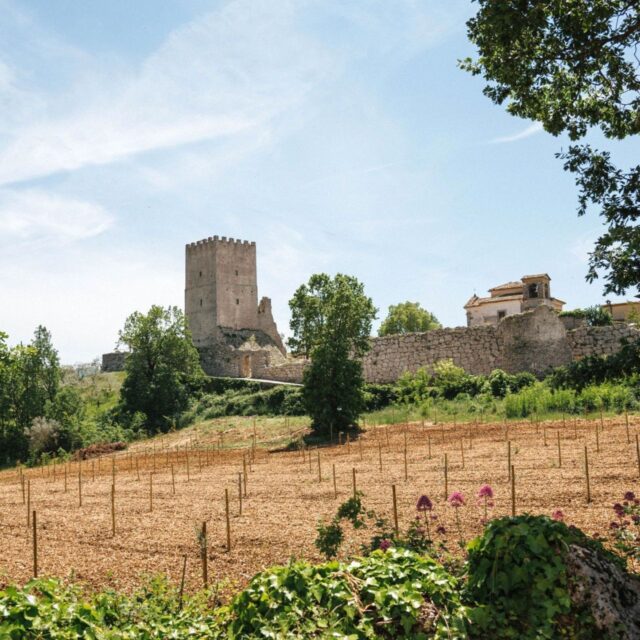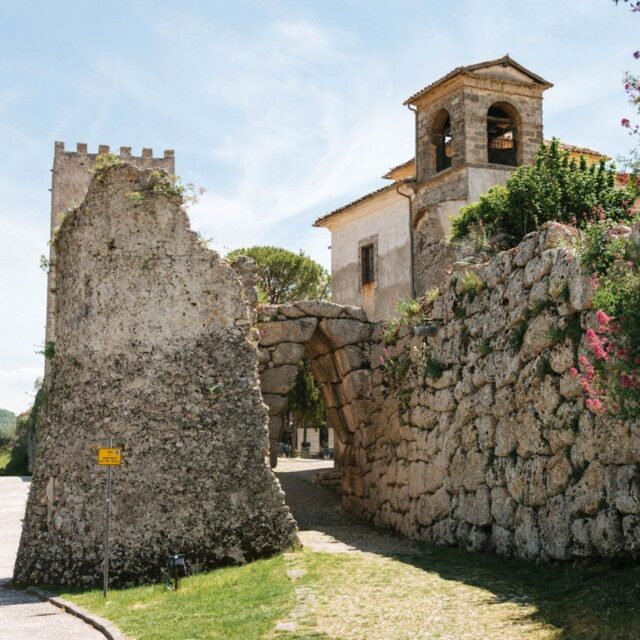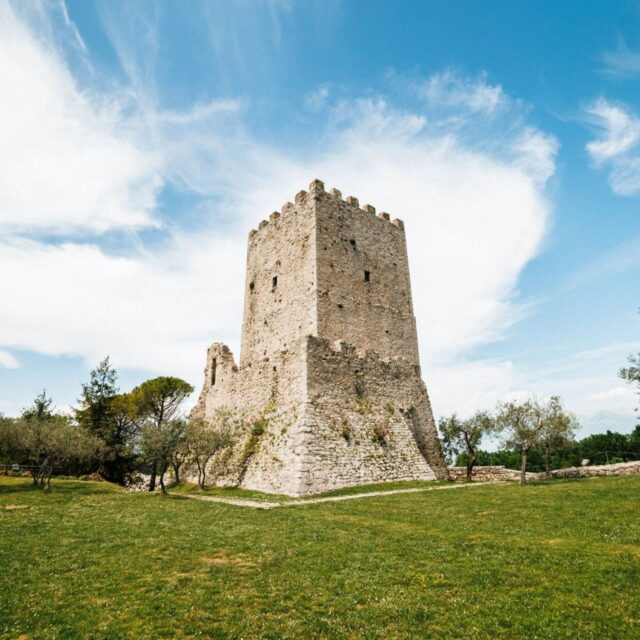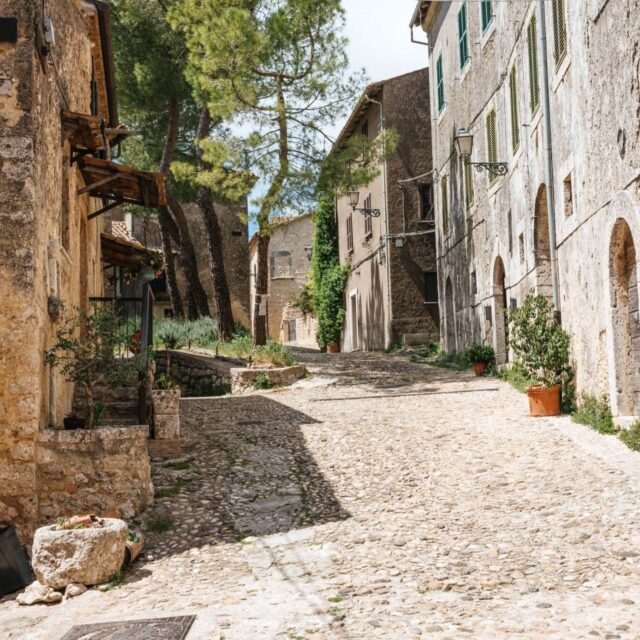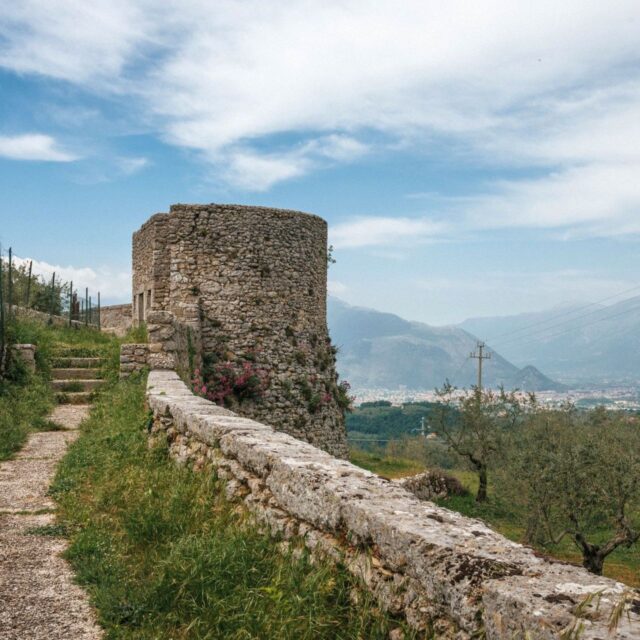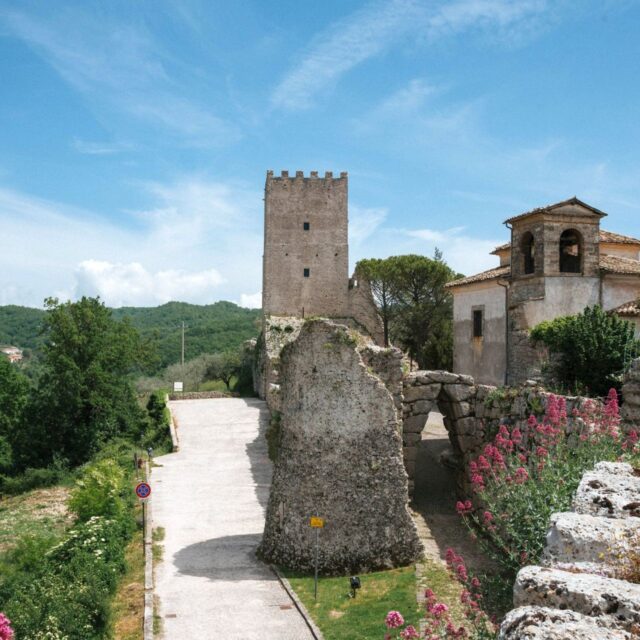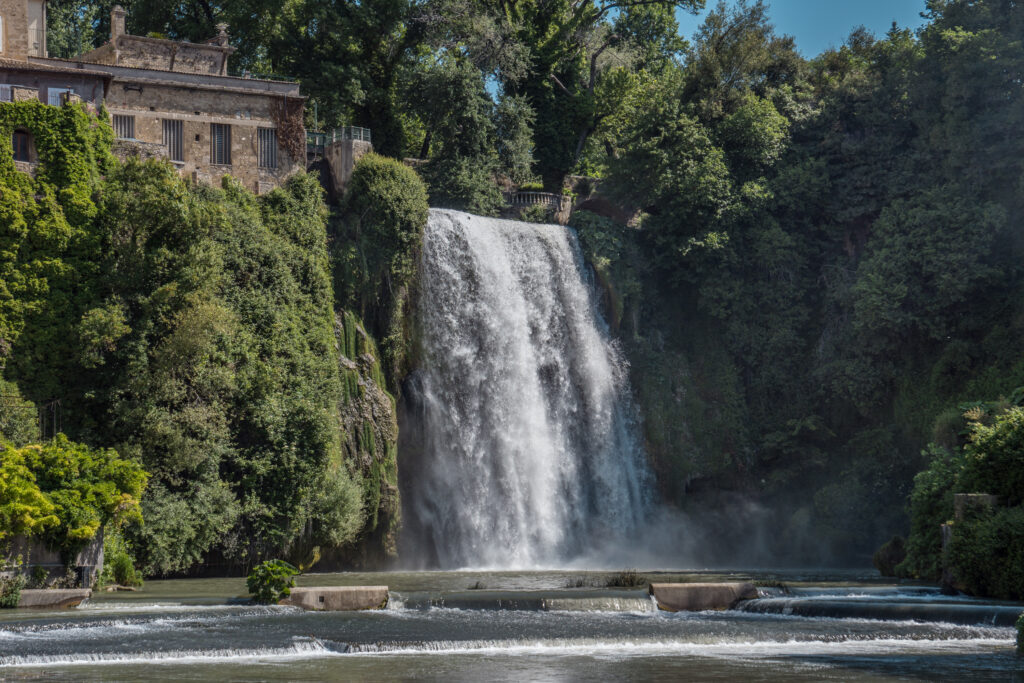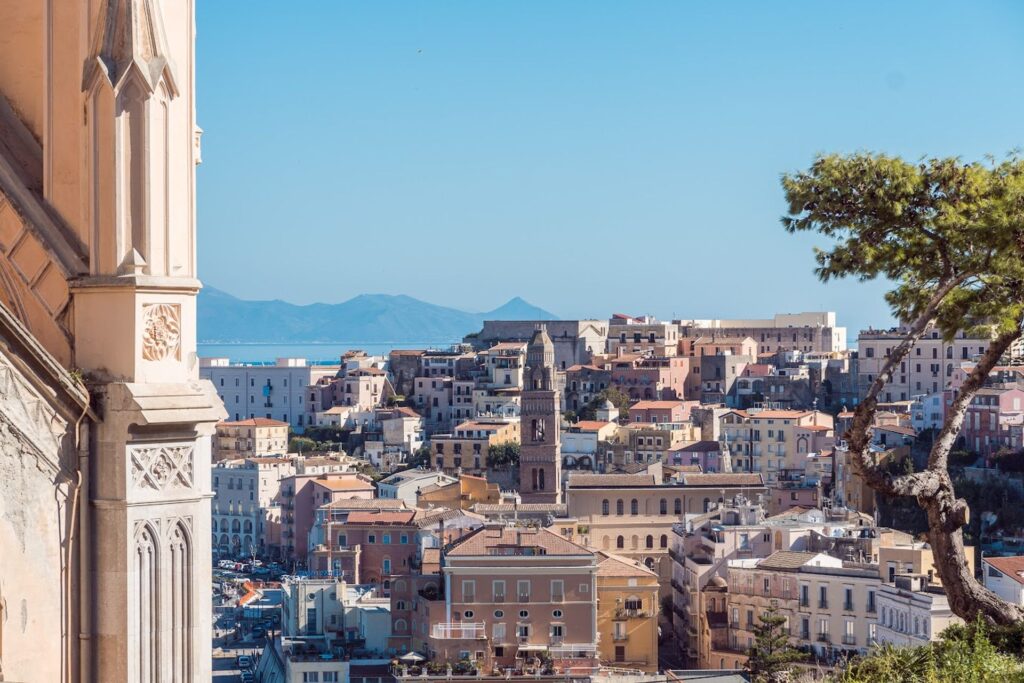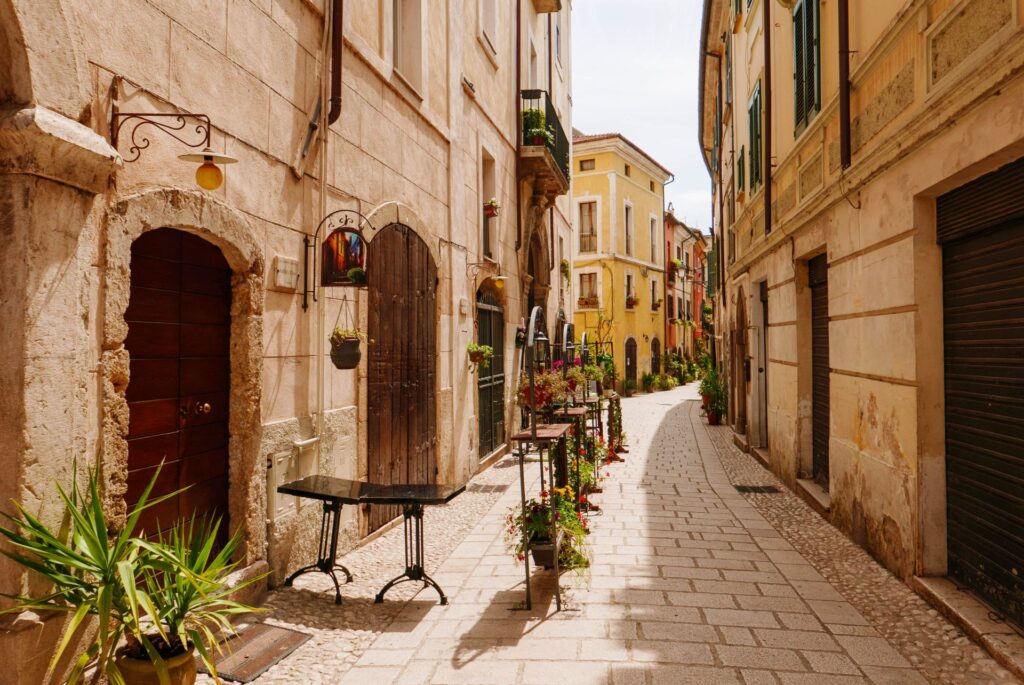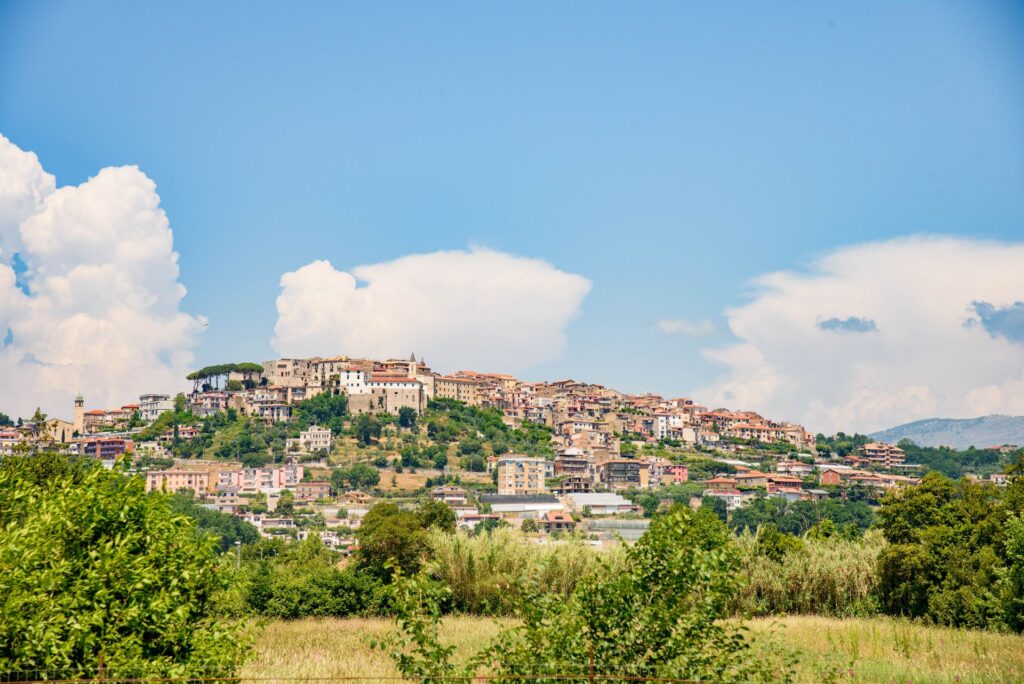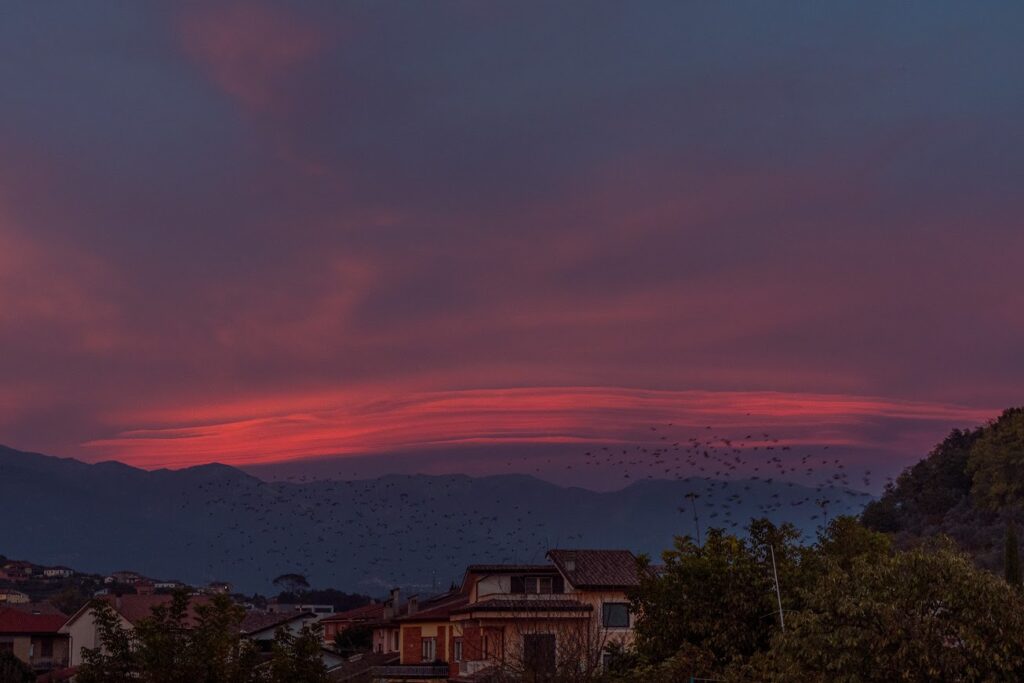Villages
Arpino
The Acropolis of Civitavecchia
The Acropolis of Civitavecchia (meaning “old town”) is located on a hill at 627 m asl, defending the town of Arpino. It features one of the best-preserved pre-Roman polygonal walls. It was the fortified point (arx) of the first settlement of the Volscian age.
According to legend, Arpino was founded by the god Saturn along with the other four “Saturnian cities” (Alatri, Anagni, Atina and Antinum i.e., Ferentino), all of which were defended by mighty walls of polygonal masonry. The chronology is uncertain; for some historians the walls were built in the 7th-6th centuries BC, for others in the 5th-4th centuries BC.
The polygonal walls of Arpino, which originally had a length of about 3 km, are now preserved for 1.5 km. Originally they also included Civita Falconara, the oldest part of the town centre. Today they appear englobed in various points in modern buildings. In the 13th century they were restored, with the addition of square and circular towers, gates and fortifications connected by ramparts. The gateway to the village has a pointed arch, the only one surviving of its kind in the entire Mediterranean area. It is 4.20 metres high and, before the 1960 restoration, it had a pillar in the centre, which preserved its integrity. During the Middle Ages, the gate was closed off by a circular tower, now partially demolished.
Among the most interesting monuments is the ‘Torre di Cicerone’, a tall medieval tower with a quadrangular plan (the donjon), restored in 2011. The structure was part of a fortified castle, of which a small parade ground with a cistern and the ruins of other towers remain. In the village, it is also possible to visit the 18th-century Church of the Holy Trinity, built by Cardinal Giuseppe Pesce, master and rector of the Papal Chapel; it houses a wooden sculpture group of the Crucifixion, made in 1726 by Tyrolean artist Michele Stolz.
The 16th-century Church of San Vito has a characteristic façade in local puddinga; it houses a statue of San Vito by Stoltz and an altarpiece by Cavalier D’Arpino, depicting Saints Vito, Modesto and Crescenzia.
The walk along the patrol path, which overlooks the olive grove slopes, among medieval towers and small urban vegetable gardens, is also very suggestive.

